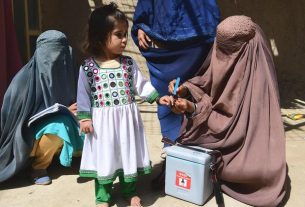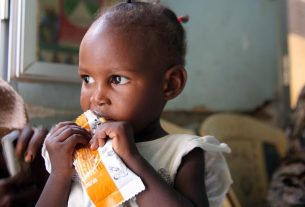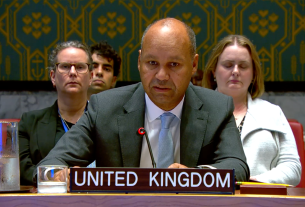Frank Täufer, a scientific assistant at Campus Wiesengut – the University of Bonn’s ecological teaching and research farm – asked a group of visiting 8-year-olds to speculate on why the rye plants in his field were all different heights. He was surprised by their insightful range of responses.
Some of the children suggested that the tall plants at the farm received more sunlight. Others thought there could be different types of rye in the field, or that insects may be blighting the crop. One student, after digging up a plant to inspect its roots, thought that the soil must be different across the field.
‘They really asked questions and thought of ideas that I wouldn’t have myself,’ said Täufer. ‘I regularly ask these questions to my university students, and they don’t have as many ideas. And none of them has ever dug up a plant to look at the roots.’
Taking children outside the classroom
Täufer’s work is part of the three-year MULTIPLIERS project, which received funding from the EU to explore ways of making science more appealing to young people.
They are doing this through the creation of what they call Open Science Communities, or OSCs. The idea is to create collaborative networks among schools, universities, informal education providers, museums, local associations, and industry and civil society in order to expand the opportunities for students to learn about science in real-world settings – like the farm.
“
I think it’s very important to bring students outside the classroom.
‘I think it’s very important to bring students outside the classroom in order to have authentic themes to work on and to make learning about science relevant to everyday life,’ said Professor Annette Scheersoi, a specialist in sustainability science education from the University of Bonn and coordinator of MULTIPLIERS.
‘When you are interested, you remember better, but you also connect more and feel the value and relevance,’ she said.
Connecting science and real life
OSCs have so far been set up in six European countries: Cyprus, Germany, Italy, Slovenia, Spain and Sweden. Students in all six countries were given the opportunity to interact with science experts from a wide range of backgrounds to explore science-based solutions for modern-day problems.
The idea is to help young people relate to the real-life science challenges we face every day, ranging from antimicrobial resistance to clean water and sanitation.
In Barcelona, for example, secondary school students were invited to apply what they learned in chemistry classes to measure air pollution in the school playground and at home. Then they presented the results.
In Germany, Slovenia and Sweden, students took to the forest to learn about sustainable forestry and biodiversity. With the guidance of local foresters and scientists, students studied different trees up close and made decisions on whether they should be felled or not.
‘The approach was to consider forestry as a complex dilemma with trade-offs between the ecosystem and wood production,’ Scheersoi said.
Multiplying the impact
Crucial also for Scheersoi has been the multiplier effect – turning the students into teachers and giving them the chance to share their newfound knowledge with others.
Schoolchildren on the ecological farm invited their parents to a tasting session where they discussed the benefits of organic produce. In the forest, parents were invited to a Forest Day under the trees, where the children shared what they had learned.
Students have also been encouraged to share their knowledge by creating podcasts, science blogs, or organising science fairs for families. Now the hope is to build on this work and further embed the approach beyond the project.
‘Across MULTIPLIERS we have seen how students, teachers and outside science experts have engaged in these lessons. We want these networks to not only stay, but to grow, bringing in more people and bringing forward this new way of learning for students,’ said Scheersoi.
Science for sustainability
As part of its open science policy, the EU is supporting open schooling for science education, recognising that Europe needs more scientists, including citizen scientists.
This is something that is also important to Jelena Kajganović, a sustainability expert at Geonardo, a Hungarian innovation and technology company active in the energy, environment and sustainable development fields.
Kajganović led a three-year EU-funded project called OTTER which, like MULTIPLIERS, aimed to inspire a different approach to science learning and connect students to real-world challenges outside the classroom. They call this approach education outside the classroom (EOC).
“
I would really like to see our approach to science education changing.
Taking learning out of the school setting through things like outdoor activities and fieldtrips, has proven positive effects, says Kajganovic. OTTER investigated how EOC could also help improve the acquisition of new knowledge and skills, specifically in the field of environmental sustainability.
‘The core ideas behind OTTER are how to make science education more attractive, how to encourage students to learn and apply their knowledge,’ she said.
Although Kajganović observes a general apathy towards science in many classrooms, she sees this as untapped potential to do more to connect learning with pressing sustainability challenges.
Working with partners in Finland, Hungary, Ireland and Spain, OTTER sought to connect science lessons in the classroom with local issues. Very quickly students in OTTER schools began to link theory and practice.
In one school, near Barcelona, a group of 14-year-olds took samples from the local river to test water quality and were alarmed by the results. Based on their findings, the students organised an online petition calling for the river to be cleaned up.
‘By testing the water, they could see the problem and they could see the connection with their own lives. It really clicked in their heads,’ said Kajganović.
Sharing knowledge across Europe
To spread the impact of their work further, the OTTER team created an online learning platform with a range of interactive teaching materials that educators can use to help them carry out education outside the classroom activities.
Looking ahead, OTTER now hopes to get teachers across Europe to use the platform to explore ways to get involved in outdoor science learning. Longer term, Kajganović believes it could spark a new way of thinking about science and inspire the next generation.
‘I would really like to see our approach to science education changing by giving young people more space to think about science and its application in their lives,’ she said. ‘In terms of sustainability, if we don’t solve our problems, no one will, and it was amazing to see young people taking the lead.’
Research in this article was funded by the EU’s Horizon Programme. The views of the interviewees don’t necessarily reflect those of the European Commission. If you liked this article, please consider sharing it on social media.



